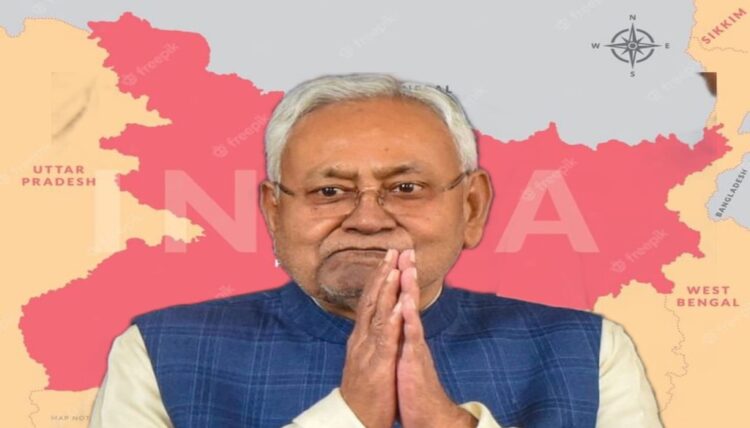Patna: The results of the Bihar Assembly elections are becoming increasingly apparent, with early indicators suggesting a significant victory for the National Democratic Alliance (NDA). By mid-morning, the NDA was leading in 190 out of 243 seats, while the Grand Alliance trailed with only 49. The Janata Dal (United), which secured just 43 seats in 2020, is on track to become the largest party, with forecasts estimating around 84 seats—an impressive turnaround that highlights Nitish Kumar’s lasting impact on state politics after two decades in power. Should these trends continue, the outcome would represent one of the most decisive mandates for the NDA in Bihar in recent times.
It would also reaffirm Nitish’s capacity to adeptly maneuver through evolving political landscapes, alliances, and voter expectations. High-profile candidates struggle as NDA gains strength The notable defeats and tight races occurring throughout Bihar further emphasize the extent of the NDA’s lead. In Raghopur, RJD leader Tejashwi Yadav is trailing behind NDA candidate Satish Yadav, a loss that would carry significant implications for the Grand Alliance. His brother, Tej Pratap Yadav, is also losing in Mahua. Deputy Chief Minister Samrat Chaudhary is comfortably leading in Tarapur, while Osama Shahabuddin, son of the late RJD figure Md Shahabuddin, is falling behind in Raghunathpur. Bhojpuri actor Khesari Lal Yadav, another prominent figure for the Grand Alliance, is trailing in Chhapra.
Prashant Kishor’s Jan Suraaj, despite a vigorous campaign and claims of emerging as a new political alternative, has yet to secure any seats. Independents and smaller parties are collectively leading in four seats. A historic turnout and evolving social dynamics This election has seen a record voter turnout of 67.10% over two phases—approximately ten percentage points higher than in 2020—indicating a more engaged electorate that may be more receptive to changes. Analysts attribute the JD (U)’s resurgence to a combination of governance-focused welfare initiatives, long-term social engineering, and the benefits of a robust central ally. Welfare, reservations, and the “double-engine” strategy At the core of Nitish Kumar’s renewed support is JEEViKA, his government’s flagship women’s empowerment and livelihood program.
This initiative provides women with Rs 10,000 to initiate income-generating activities and up to Rs 2 lakh after six months of operation, gaining traction in rural Bihar, especially among women voters who have historically supported the JD(U). Nitish’s advocacy for 33% reservation for women and backward classes in panchayats has further transformed local political engagement, enhancing the party’s connection with marginalized groups and solidifying a diverse social coalition. The third element of the JD (U)’s success is the NDA’s narrative of a “double-engine government.” Significant financial backing from the Centre—including Rs 11,000 crore in budgetary allocations, alongside new expressway and infrastructure initiatives—has enabled the JD (U) to position itself as a collaborator in a broader growth strategy.
The path ahead While the final results are still pending, the emerging landscape clearly indicates the magnitude of the NDA’s mandate. For Nitish Kumar, who has navigated shifting alliances, political betrayals, and scrutiny regarding his longevity, this election signifies yet another evolution—one that re-establishes him at the forefront of Bihar’s political scene.


